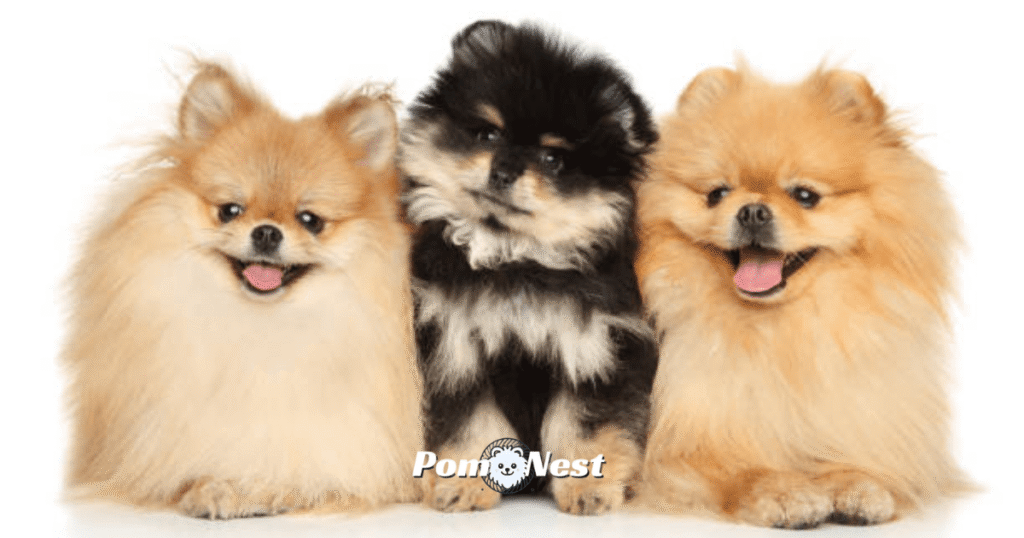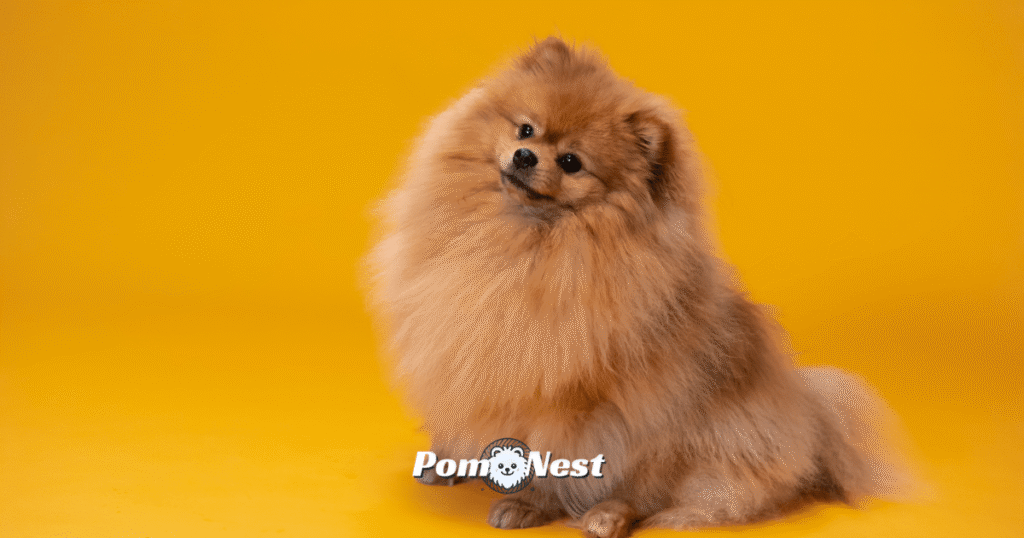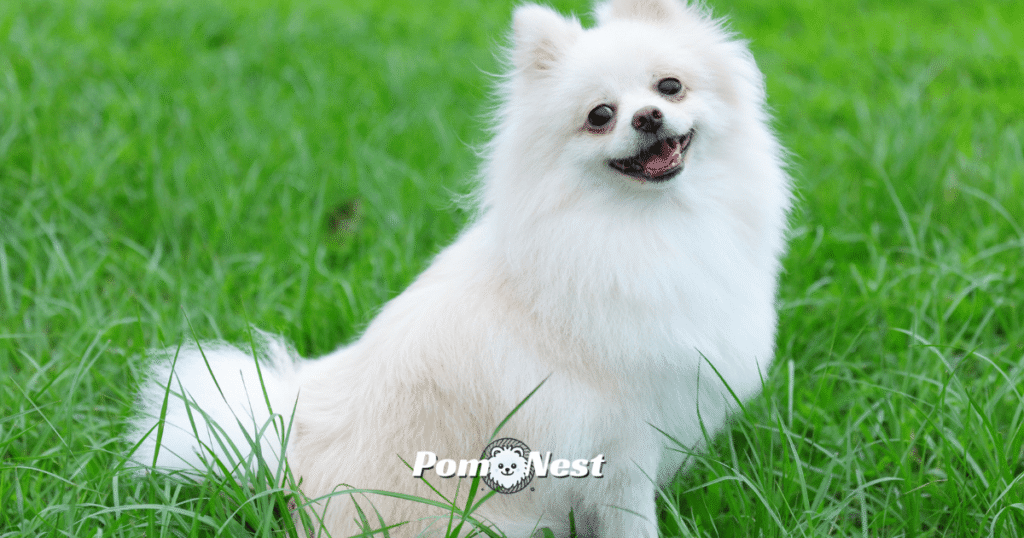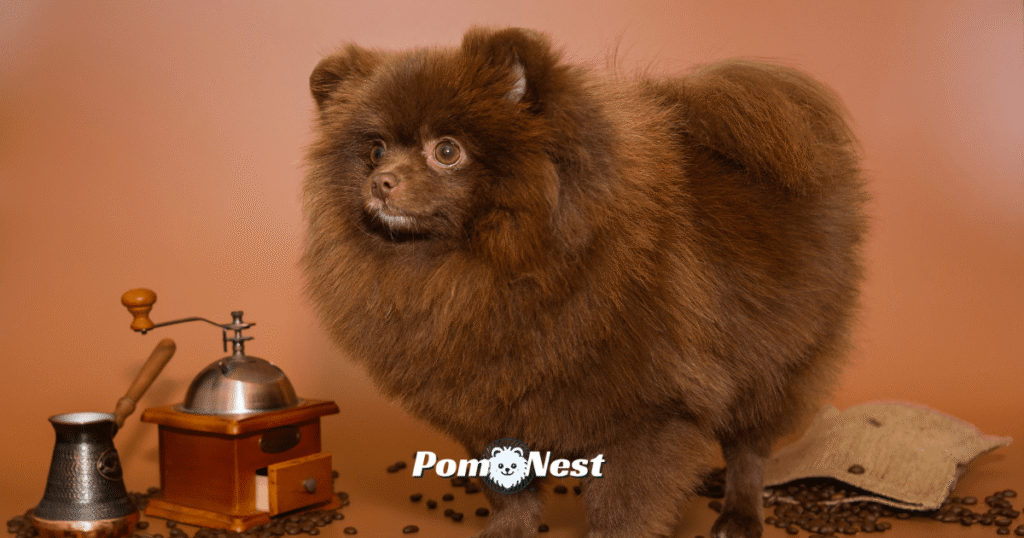Pomeranian colors and coat pigmentation encompass in excess of twenty distinct chromatic expressions, ranging from widely recognized orange, black, and cream to the uncommon lavender (Isabella) and the intriguingly labeled wolf sable. Such vivid pelage patterns emerge as the cumulative result of genetic inheritance, deliberate selective breeding, and, at times, subtle dilution phenomena. Beyond aesthetic function, each hue contributes positively to the breed’s allure, while concomitantly imposing targeted demands in terms of grooming protocols and genetic scrutiny that prospective and current guardians ought to comprehend fully.

Pomeranians are compact in stature, yet virtually shout their individuality through vivid coats. Anyone who has been near one will attest to their visual impact, yet many are surprised to learn that the breed boasts over twenty distinct hues and patterns. Ranging from lustrous black and fiery red to the elusive Lavender hue, sometimes termed Isabella, the breed embodies a spectrum that rivals many palettes.
What follows is a systematic inventory, from the traditionally accepted to the infrequently encountered varieties, intended to guide prospective owners and breeders in identifying the most suitable aesthetic complement to their home and lifestyle. The discourse will equally address the manner in which these colors are expressed on the canine genome, their subsequent grooming ramifications, and the prescriptive norms of the breed.
Level of experience, be it the nascent novice or the shade-savvy expert, will find a single reference encompassing the official requirements of the American Kennel Club and the variations that domestic enthusiasts have documented.
Recognized Pomeranian Colors: A Complete Overview
Officially, the American Kennel Club imposes no limitations upon the artistic range displayed by the Pomeranian. Dust, montré, or brindle—whatever the spectrum—pupils of the breed are accepted without nuance; none are rendered ineligible. Accordingly, Pomeranians are among the most chromatically and texturally heterogeneous of all toy breeds. Behind the aesthetic is a genetic underbelly that dictates not only neglect or grooming for show, but also, in some rare instances, inheritable predispositions that correlate with specific color.
Market valuations can reflect similar undercurrents; breeders are sometimes informally guided by how color accents a show standard, forcing hues to be exiled to the margins of commercial indifference or lifted toward the auction block and claimed with unjustified zeal. Thus the chromatic identity of the Pomeranian is a complex product of visual charm, genomic code, and—as is the case in color-focused breeds—circumstantial economics.
The official Pomeranian color spectrum enumerates clearly defined categories: distinctive solids like black, vivid orange, and pure white; opposing color-patterned variations, namely the Parti; and the rarer sable and merle sinks, including the Chocolate Merle and the Wolf Sable individuals noted for their unusually intricate coloration. Worth underlining is that the majority of hues publicly displayed today emerged through generations of systematic selective breeding aimed at accentuating certain pigments and patterns while muting others.
How Many Coat Colors Do Pomeranians Have?
Expert evaluations report a systematic minimum of 25 color designations for the Pomeranian, a figure that excludes additional combinations of dilute, brindle, and ticking. Intriguingly, color expression is sometimes dynamic, as visible at whelping: a puppy registered at birth as orange may, through the gradual expression of gene complexes, attain a Cream Sable phenotype at maturation.
Commonly cited colors now include orange, black, cream, red, and chocolate; however, the attention of both breeders and the collecting community is disproportionately captured by rarer hues such as blue, Beaver, and Lavender (Isabella), for which scarcity and a pronounced buyer interest frequently translate into higher market values.
The Genetics Behind Pomeranian Coat Colors
Pomeranian coloration is under firm genetic surveillance, principally modulated by allelic combinations inherited from the dam and sire. Variants mapping to the Extension and Agouti loci chiefly instruct the melanocytes to synthesize either eumelanin (dark) or phaeomelanin (light), while multiple modifier loci confer refinement of hue and pattern. An instructive mutation at a single nucleotide site may, through gain or loss of function, elicit a phenotypic divestment from sable to merle, rendering color a classical model for the intricate interplay of selective and spontaneous mutation forces.
What Determines a Pom’s Color?
Within an individual Pomeranian exist myriad alleles for coat coloration. Ordinarily, one locus exhibits strict dominance, dictating visible phenotype, while recessive counterparts evade manifestation. Consequently, unexpected variants may surface; a Blue and Tan phenotype arises parentally from ostensibly homogenous orange individuals—mere contingency upon assortative inheritance.
Role of Dilution, Pigment, and DNA
Dilution in canine pelage transpires through modifier loci that attenuate eumelanin and pheomelanin production. Thus, an Isabella (or lavender) Pomeranian converts a foundational chocolate or slate-nposed phenotype into a muted, dusty hue through partial pigment repression. Advanced degrees of dilution concomitantly predispose individuals to telogen effluvium and disrupted cutaneous barrier integrity, warranting guarded husbandry.
Full Chart of Pomeranian Colors and Shades
Color types fall under two categories: standard and rare. The AKC breed standard accepts both equally, but rare ones are less common in shows.
Standard Colors from AKC and Global Breed Clubs
| Color Name | Description | AKC Accepted? |
| Orange | Most popular, can range from deep rust to golden | Yes |
| Black | Jet black with guard hairs and undercoat of same color | Yes |
| Cream | Pale orange, soft coat texture | Yes |
| Red | Dark rusty tones | Yes |
| White | Solid snow white with no yellowing | Yes |
| Blue | Diluted black with gray tones | Yes |
| Chocolate | Deep brown with self-colored pigment | Yes |
Rare and Unique Pomeranian Color Variants
| Rare Color | Notes |
| Beaver Pomeranian | Silvery brown with hazel eyes |
| Chocolate Merle Pomeranian | Mottled chocolate with pale patches |
| Blue and Tan Pomeranian | Steel-blue base with tan points |
| Lavender Pomeranian (Isabella) | Light gray with pinkish tint |
| Wolf Sable Pomeranian | Gray coat with distinct eye markings |
| Extreme Piebald Parti Pomeranian | Mostly white body with minimal colored patches |
Detailed Breakdown of Solid Pomeranian Colors
Orange and Red Pomeranians

These blanket hues epitomise the breed. Orange Sables illuminate the breed by being ticked: each top-hair sunlit orange, the needle grey-black sheperd highlights the overale. Red displays a uthol, unevenly imprinted mahogany powder base. Both formulations patina with the normalize, any excessive ultraviolet waves tend to refine the blunt, unfire sheen to imperceptible copper-rose saise.
White and Cream Pomeranians

White Pomeranians resemble elegant, compact snowflakes, their crystalline allure unmarred by any tint of lemon or cream to comply with the American Kennel Club standard. Cream Pomeranians may initially appear white but frequently develop color as they mature. Throughout the maturation process, their desaturation should always retain consistently black markings on the nose and eyelids to preserve breed integrity.
Black, Blue, and Brown Pomeranians

Black Pomeranians exhibit uniform melanism from the snout to the tip of the fur. Nonetheless, excessive sun exposure may induce a temporary russet warmning to the coat. Blue Pomeranians represent a dilute black phenotype, presenting a distinctive, high-shine slate-gray that commands immediate attention. Brown Pomeranians, with their chocolate and Beaver subdivisions, display a velvety smooth pigment manifesting as rich mahogany to muted fawn, respectively.
Lavender, Beaver, and Chocolate Coats

Lavender Pomeranians, or Isabella, emerge from the intersection of recessive dilute brown and black genes, resulting in a luminous, powder-grey hue. The Beaver Pomeranian, characterized by a light, warm taupe, frequently exhibits mellow, caramelized eye color. Chocolate Pomeranians, conversely, lean toward deep, glossy mocha, complemented by brown-hued tactile pads and lip pigmentation that emphasize their distinctive palette.
Pomeranian Color Patterns Explained
Sable Variants (Orange, Red, Blue, Wolf)
Sable means black-tipped guard hairs and undercoat over a colored base. Orange Sable Pomeranian and Wolf Sable Pomeranian are two of the most striking examples. Wolf sable is identified by “spectacles” around the eyes, while orange sables grow lighter over time.
Merle and Brindle Markings
Merle coats are patchy and diluted with random patterns. The Chocolate Merle Pomeranian is a dazzling example. Brindle is less common but features tiger-like black stripes over a red or gold base, giving a wild look.
Parti-Color and Tri-Colored Pomeranians
A Parti-color Pomeranian has white as its base and patches of any other color. The Extreme Piebald Parti Pomeranian has mostly white with small color spots on the head or tail. Tri-colored Poms mix tan points on Pomeranians with the parti pattern.
Tan Point Combinations (Black & Tan, Blue & Tan, Brown & Tan)
These Poms have sharp tan markings above the eyes, chest, and under the tail. The Blue and Tan Pomeranian is a favorite among enthusiasts. These markings are inherited and must be well-defined to meet show standards.
Color-Linked Health Concerns in Pomeranians
Color Dilution Alopecia in Genetic Context
Color Dilution Alopecia affects canine coats where pigment is genetically lightened—specifically in dilute blue and lavender Pomeranians. Manifestations include patchy hair loss and dermal discomfort; while survival is unaffected, lifelong management through reduced ultraviolet exposure and uniform topical care is necessary.
Auditory and Visual Anomalies in Merle-Banded Lines
Bilateral sensory deficits are frequently observed in Pomeranians exhibiting homozygosity for the merle allele. Crossing parents, one each carrying the merle variant, catalyzes the most severe phenotypic consequence; a monomeric pairing permits symptom-free phenotype phenotypicbell with reduced risk of concurrent congenital deficits.
Pragmatic Approaches for Genetic Oversight
Candidates for the breeding pool are subjected to DNA assays targeting merle and dilution loci. Locus homozygosity, particularly for merle, is contraindicated. Diversification by phenotype or color variance s negat es resultant instances within recognized standards, thereb ensuring aesthetic qual dy equal to datic quality.
Color Dynamics in Pomeranians: Juvenile to Mature Transition
Pomeranian Color Developmental Trajectories
Neonatal pigmentary infusion signatures frequently present with hyperchromic melanin and progressively dwindle to phenotype pheno pheno. Omicron sable or sable sable sable sable ders may successfully mask eumelanin at phototypic marginal thresholds, permitting ultimate phenotype brightening; the gradual dynamic may inconspicuously diffuse for novelty to novice caregivers.
Phenotype Consistency in the ‘Clear’ Orange Morph
Clear’ orange Pomeranians, phenotypically non-obliterative of dorsal sable pheno, phenotypically demonstrate a mith symmetric eumelanin, effectively config tier homozygous structure for pyrrhic phenotype. Their ontogenic contrast curve is stabilized in most absence of sable, yielding coefficient consistencypast indiv forced phenotype.
Grooming Protocols Associated with Coat Color
The Maintenance Implications of Coat Hue
Coats exhibiting deep pigments, such as jet black or chocolate brown, benefit from daily UV shielding to minimize tonal bleach from sunlight. Cream and white Pomskis, in contrast, retain moisture stains at the ocular and orofacial regions, necessitating bi-weekly local cleansing.
Optimal Formulations for Light and Dark Coat Types
Formulations featuring fluorescent violet pigments should be employed on clarity-Seeking cream and white Pom coats to counter the yellowing spectrum. Conversely, sable, black and chocolate coats achieve maximal gloss and stability from gloss-boosting, UV-absorbing conditioners and leave-in, waterproof serums.
Electing a Color-Related Pomeranian
Judicial Preferences in Competitive Circles
Judges display a pronounced affinity for saturated, homogeneous colours, especially when joined with high contrast and the absence of soot or bridging. Thus a determined black & tan, fire-bright orange, or parti-mark with sharply defined borders will consistently seize the eye.
Rare Color Acquisitions and Associated Economics
Lavender Pomeranian (Isabella) and wolf sable progeny typify extraordinary colour acquisition. Their sparse presence is a reflection of the genetic bottleneck and often commands an acquisition premium of 200 to 300, relative to orange cohorts.
Does Hue Imply Temperament or Cost?
Behavioural phenotype remains colour-agnostic, although acquisition economics invert. The relative scarcity of lav and sable progeny frequently distorts consumer expenditure, with transactional differences of 200 to 300 in the colour league table.
Colour-Related Pomeranian Inquiries
Which Hue Represents Dominance in the Gene Pool?
Contrasted on all reports and pedigree returns, citrus orange stands undisputed as the dominant hue in Pomeranian breeding, exhibiting pervasive genetic conveyance.
Are white Pomeranians purebred?
White Pomeranians qualify as purebred if they conform to the American Kennel Club (AKC) standard for the breed, provided the white coat displays no hint of lemon or cream tint.
Determining the Purity of Pomeranian Coat Color
Cautions Regarding Breeders’ Declarations
A minority of breeders employ dyes or inaccurately label coat colors to achieve inflated prices. Consult the standardized Pomeranian color chart, and request documented genetic testing for verification if warranted.
Interpreting AKC Color Registrations
The AKC specifies unique color codes for documented pedigrees. The descriptor on the pedigree should correspond precisely to the dog’s observable coat and pattern.
Describing Standards in Australia and the United Kingdom
The Australian breed standard accommodates an expanded array of color divisions, whereas the UK breed standard bans merles in their entirety. The AKC standard, in contrast, permits all colors and patterns to compete on equivalent terms in conformation shows.
Differences from AKC Standards
The AKC breed standard is more flexible. It permits all colors and patterns to compete equally.
Conclusion – What Distinguishes Every Pomeranian Coat from Its Siblings?
Guidelines for Selecting the Coat Most Suited to Your Lifestyle
Although pigment contributes to the individual identity of the Pomeranian, priorities should always begin with soundness and temperament. Enthusiasts who are prepared for daily brushing and dream of presenting an uncommon hue should gravitate toward the more elusive varieties. Conversely, households seeking minimal coat care should opt for the classic, warm orange or the soft cream, both of which require the least styling effort.
Regardless of the outer shade, the singularity of the breed endures: an iridescent halo of fluff, an ego proportionally larger than its stature, and an effortless ability to infuse the home with exuberance.
FAQs
What is the rarest color of Pomeranian?
The rarest Pomeranian color is Lavender (Isabella), a silvery-lilac shade caused by double dilution genes, and it’s rarely seen in purebred litters.
What is the best color for a Pomeranian?
There’s no “best” color, but orange and orange sable are the most classic and popular due to their rich, warm tones and easy maintenance.
What is the natural color of Pomeranians?
Originally, white, black, and cream were the natural coat colors when Pomeranians were first bred down from larger Spitz dogs.
Which Pomeranian breed is best?
The purebred Toy Pomeranian recognized by the American Kennel Club (AKC) is considered the best standard for health, temperament, and show potential.
Are boy or girl Pomeranians better?
It depends on your lifestyle—males are often more affectionate and playful, while females can be slightly more independent and easier to train.
